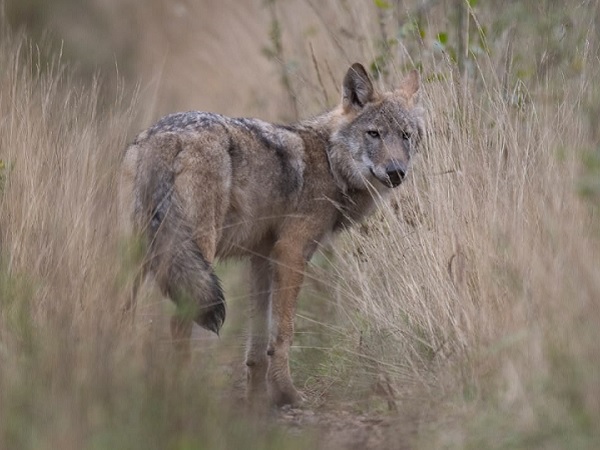 Wolf;
Credit: © Tobias Reimann)
Wolf;
Credit: © Tobias Reimann)
On Monday 1 August 2023, Luxembourg's Ministry of the Environment, Climate and Sustainable Development, together with the Administration of the Nature and Forests, reported that there is clear evidence of wolves in the area of Lieler in the north of the Grand Duchy, near Weiswampach in the municipality of Clervaux.
The statement confirmed that, about two weeks ago, a sheep was clearly attacked by a predator on a field in the Lieler area. On the basis of the report by experts from the nature administration, the involvement of a wolf could not be ruled out. For the purpose of genetic analysis, samples were taken from the bite wounds of the sheep's carcass. The samples were examined at the Senckenberg Institute in Gelnhausen, Germany, the reference laboratory in this area. The results of the laboratory analyses in relation to species identification and population affiliation were submitted to the nature administration. The following is now official:
- Species analysis has shown that the above animal was clearly a wolf. The injured sheep farmer is therefore compensated 100%.
- The population analysis has shown that it is a wolf from the Central European population, whose distribution centre extends from the Vistula in central Poland to Lower Saxony (D). Animals from this population have also been found in Belgium, the Netherlands and Rhineland-Palatinate. The wolves GW1608m (Niederanven, 2020) and GW2488m (Troine, 2023) also came from this population.
- The gender analysis and the analysis of the genotype (genetic fingerprint) yielded no result, which is why it is not known which individual it is.
- The record from the Lieler area is the second confirmed wolf record in Luxembourg in 2023.
Another sample taken a few weeks ago from a sheep in the Hoffelt area came from a domestic dog (domestic dogs also kill sheep from time to time).
Member of the public are called upon to immediately report any indications of the presence of wolves to the nature department for monitoring purposes (email: wolf@anf.etat.lu).
The role of wolves in the ecosystem
The wolf is strictly protected throughout Europe. It plays an important role in our ecosystems, where as a top predator it contributes to reducing excessive hoofed game densities. In recent years, Luxembourg has been preparing for the possible return of the wolf in order to define clear guidelines for dealing with this species. This was recorded in the action and management plan for dealing with wolves in Luxembourg, which was drawn up together with all actors from agriculture, science, nature conservation, private forest owners and hunting, and was presented to the public in 2017.
Wolves are very shy - rules of conduct in the event of an encounter with a wolf
Wolves generally avoid direct contact with humans. Encounters between humans and wolves are therefore extremely rare, but not impossible. Wolves usually retreat as soon as they see a human. But they can also be quite curious and take a closer look at the person before retreating. In addition to lots of other information about wolves, the brochure "Wolves in Luxembourg?" also explains rules of conduct that should be observed if you encounter a wolf:
- Do not run away, this can trigger the hunting instinct.
- Do not move towards the wolf. Always keep an eye on the wolf. However, eye contact should be avoided.
- Get the wolf's attention. Shout out to him/her and wave your arms. If the wolf does not retreat immediately, back away slowly and keep a respectful distance.
- Never try to lure wolves with food (not even to take photographs).
The Wolf Action Plan and Code of Conduct booklet are available free-of-charge online and in print from the Nature Agency on tel: 247-56652 and in the Agency's Visitor Centres. These are: Mirador in Steinfort, A Wiewesch in Manternach, Ellergronn in Esch-Alzette, Biodiversum in Remerschen and Burfelt near Insenborn. It can also be found onlinw at www.emwelt.lu.








